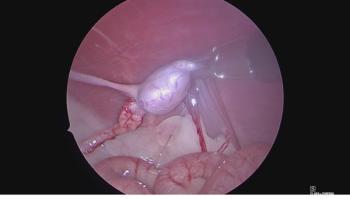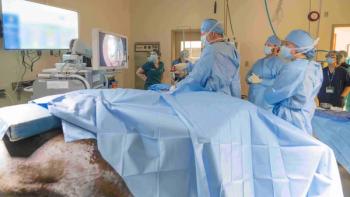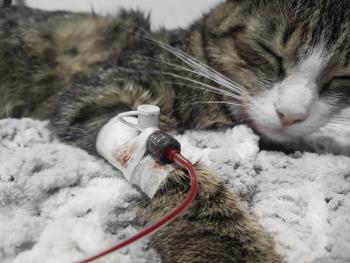
Skills Laboratory: Reconstructive surgery techniques, Part 2: Adjustable horizontal mattress suture
The adjustable horizontal mattress suture is indicated primarily for limb wounds that are either relatively new or are in the wound contraction phase and in which the edges cannot initially be apposed.
The adjustable horizontal mattress suture is indicated primarily for limb wounds that are either relatively new or are in the wound contraction phase and in which the edges cannot initially be apposed.1 The technique is indicated if, in the surgeon's judgment, the wound will eventually close without requiring a graft or flap (Figure 1). You can use the adjustable horizonal mattress suture alone as a technique to stretch skin for wound closure, or in conjunction with the presuturing technique. For the latter, if presuturing does not provide the skin necessary for wound closure, you can follow it with the adjustable horizontal mattress suture to close or reduce the size of the wound.
Figure 1. This technique is used for wounds in which the skin edges cannot quite be apposed and that will close without a graft or flap.
The adjustable horizontal mattress suture requires that a sewing button and a split shot fishing weight (Figure 2A) be placed on each end of the suture. Nontoxic (nonlead) split shot is preferred to avoid the risk of lead toxicosis if the animal chews at the site. The button and split shot are first cold-sterilized in chlorhexidine gluconate or chlorhexidine acetate solution. Each suture end runs through a hole in the button and then through the tongue-and-groove portion of the split shot (Figure 2B). This portion of the split shot can be opened (Figure 2C) to allow removal of the split shot from the suture when you adjust the tension on the suture. Following this adjustment, apply the split shot to the suture and close it (Figure 2D) to hold the desired amount of tension. You can adjust the tension on the suture over several days, with gradual tightening, allowing the skin to relax and stretch as the skin edges move toward apposition.
Figure 2A-2D. A sewing button and a split shot fishing weight are used on each end of the suture in this technique.
ADVANTAGES AND DISADVANTAGES
This technique gradually stretches the skin to cover the wound so a graft or flap may not be necessary. If a graft does prove to be necessary, its size will be smaller after this technique. When used on a wound in the repair stage of healing, the adjustable horizontal mattress suture is an adjunct to wound contraction, thus shortening the time for wound closure.1 The technique can also be used in conjunction with relaxing incisions to attain wound closure. However, the adjustable horizontal mattress suture should be used first, and if wound closure is not attained, then some form of relaxing incision can be used during a second surgical procedure.
A disadvantage of this technique is that it can create a biologic tourniquet if the suture is tightened too much; however, this complication is easily corrected by loosening the suture. If the suture is placed in wound edges that are too far apart on the limbs, tightening could result in the suture's cutting into tissues as they tighten over the wound curvature. In addition, some pressure necrosis can develop under the button. However, this is usually partial thickness and heals quickly after suture removal.
Editors' Note: This technique was demonstrated on a canine specimen obtained from a specimen supply company.
ACKNOWLEDGMENT
Thank you to Lori Lind, RVT, Gladstone Animal Clinic, Gladstone, Mo., for her assistance during the demonstration.
Steven F. Swaim, DVM, MS
Professor emeritus
Scott-Ritchey Research Center
Department of Clinical Sciences
College of Veterinary Medicine
Auburn University
Auburn University, AL 36849
REFERENCE
1. Swaim SF, Henderson RA. Small animal wound management. 2nd Ed. Baltimore, Md: Williams & Wilkins, 1997;171-173.
<Video 1
|
Step 1>
Introduction
Step 1
Step 2
Step 3
Step 4
Step 5
Step 6
Step 7
Video 1
Video 2
Video 3
Newsletter
From exam room tips to practice management insights, get trusted veterinary news delivered straight to your inbox—subscribe to dvm360.




